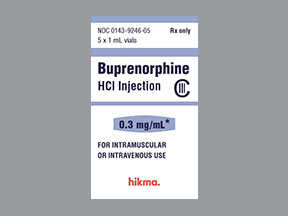
My prescription
Edit
1ML of 0.3MG/ML, Buprenorphine (1 Syringe)
Select pharmacy

CVS
$35.32
COUPON PRICE
Walgreens
$7.60
COUPON PRICE
Albertsons
$16.42
COUPON PRICE
Walmart
$16.61
COUPON PRICEFree Buprenorphine Savings Card

Walgreens
$7.60
Show this coupon to your pharmacist
ID
LHA12DA965
PCN
HT
BIN
011867
GRP
LABH001
This coupon is not insurance
More prescriptions for pain
More prescriptions for pain
Price history for Butrans (brand) & Buprenorphine (generic)
1 Syringe, 1ML of 0.3MG/ML
Average retail price for Butrans
Average retail price for Buprenorphine
Average SaveHealth price for Buprenorphine
Our price history data is based on aggregated prescription data collected from participating pharmacies in America. Our prescription data updates daily to reflect the latest price changes. If you notice a missing data point, it means there wasn't sufficient data available to generate a monetary value for that date.
We analyzed Buprenorphine prices for (1ML of 0.3MG/ML, 1 Syringe) over the last 12 months. The average retail price was $76.71, while the average price using the SaveHealth discount card was $22.53. That's a savings of approximately 70.63% when using our Buprenorphine coupon.
Compared to the generic version, Butrans had an average price of $219.01 over the same time period. With the SaveHealth savings card, Buprenorphine is 89.71% cheaper on average than Butrans.
*Retail prices are based on pharmacy claims data, and may not be accurate when we don't have enough claims.
Buprenorphine dosage forms
Dosage Quantity Price from Per unit 1ML of 0.3MG/ML 1 Vial $21.68 $21.68 1ML of 0.3MG/ML 2 Vials $34.36 $17.18 1ML of 0.3MG/ML 3 Vials $47.04 $15.68
| Dosage | Quantity | Price from | Per unit |
|---|---|---|---|
| 1ML of 0.3MG/ML | 1 Vial | $21.68 | $21.68 |
| 1ML of 0.3MG/ML | 2 Vials | $34.36 | $17.18 |
| 1ML of 0.3MG/ML | 3 Vials | $47.04 | $15.68 |
Buprenorphine Warnings
Buprenorphine is a medication with specific safety considerations. Its use carries risks such as addiction, breathing difficulties, and potential harm to certain populations. Below are essential safety guidelines and warnings for its use:
Risk of Addiction and Misuse: Buprenorphine is a Schedule III controlled substance, which means it has potential for abuse and addiction. Misuse can lead to serious side effects, including dangerously slow breathing. Always take buprenorphine exactly as prescribed and do not adjust your dose without consulting your healthcare provider. Those with a history of substance use disorder should use caution.
Breathing Problems: This medication can cause severe respiratory depression, particularly when starting the treatment, after a dose increase, or if taken incorrectly. The risk is heightened when combined with alcohol or other sedatives, such as benzodiazepines and opioids. In case of breathing difficulties, bluish lips or skin, or extreme drowsiness, administer naloxone if available, and seek emergency medical help immediately.
Use During Pregnancy: Buprenorphine can affect the unborn child if taken during pregnancy. It may cause dependency in the baby, leading to withdrawal symptoms after birth, which can be life-threatening. Pregnant women or those planning to become pregnant should discuss the risks and benefits with their healthcare provider, and use the lowest effective dose for the shortest duration.
Adrenal Insufficiency: Long-term use of buprenorphine could lead to a decrease in adrenal hormone levels. Symptoms include nausea, vomiting, fatigue, and dizziness. Report these to your healthcare provider, who may need to adjust your treatment.
Liver Health: Buprenorphine has been linked to liver damage, especially in individuals with pre-existing liver conditions. Regular liver function tests may be recommended. Signs of liver issues include fatigue, nausea, and jaundice, which should be reported immediately.
Not for Pain Management in Opioid-Naïve Individuals: Buprenorphine is not intended for pain relief in individuals who have not previously used opioids, as there have been fatal incidents reported.
Dental Health: Buprenorphine, particularly in oral forms, can cause dental issues such as cavities and tooth loss. Maintain regular dental check-ups and oral hygiene practices, including rinsing your mouth after taking the medication and waiting at least an hour before brushing your teeth.
Heart Rhythm Disturbances: This medication can lead to QT prolongation, a serious heart rhythm disorder. Those with existing heart conditions or imbalanced electrolytes should inform their provider. Symptoms like chest pain or fainting should prompt immediate medical evaluation.
For a safe treatment experience, always communicate openly with your healthcare provider about any concerns or pre-existing conditions, and adhere strictly to prescribed guidelines.
Buprenorphine Side Effects
Common side effects:
- headache
- nausea
- sweating
- constipation
- dizziness
- drowsiness
- lightheadedness
- redness or irritation at the injection site
- vomiting
- diarrhea
- stomach pain
- difficulty sleeping
- general discomfort
Less common but important to monitor:
- muscle aches
- anxiety
- restlessness
Serious side effects:
- severe drowsiness
- difficulty waking
- interrupted breathing during sleep
- signs of liver damage
- yellowing of the skin and eyes
- serious allergic reactions
- heart rhythm problems
- dangerously slow breathing
Buprenorphine Interactions
Interactions with high risk of serious adverse effects and should be avoided:
- Bepridil
- Cisapride
- Dronedarone
- Fluconazole
- Ketoconazole
- Mesoridazine
- Nalmefene
- Naltrexone
- Pimozide
- Piperaquine
- Posaconazole
- Safinamide
- Saquinavir
- Sparfloxacin
- Terfenadine
Interactions with moderate risk that may require dose adjustment, closer monitoring, or timing changes:
- Butorphanol
- Nalbuphine
- Pentazocine
- Samidorphan
- Alprazolam
- Lorazepam
- Zolpidem
- Carisoprodol
- Cyclobenzaprine
- Cetirizine
- Diphenhydramine
- Codeine
- Hydrocodone
